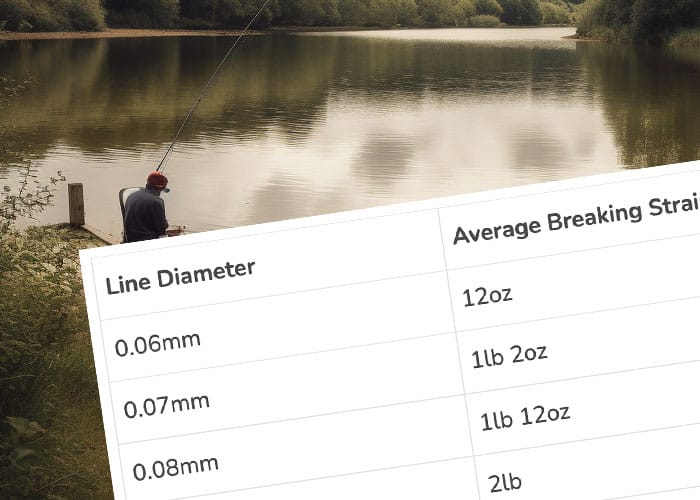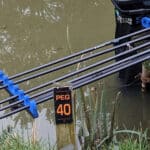Understanding fishing line diameters and strength is fundamental to successful angling. From match anglers to seasoned veterans, the terminology and nuances associated with these parameters significantly affect their strategies and success rates. This article aims to explain the critical aspects of fishing line diameter and strength, leveraging a fishing line strength chart UK and busting some myths around fishing line weight. We’ll also touch upon what strength line for coarse fishing is ideal, providing some clarity on fishing line sizes and their corresponding strength.
Fishing Line Diameter and Breaking Strain: A Handy Chart
A common practice among match anglers is referring to their fishing lines in terms of diameters rather than breaking strain. They frequently use this terminology when discussing the thickness of the high-tech lines employed, particularly in pole-fishing. The table below shows commonly used line diameters and their average relative breaking strains, functioning as a handy fishing line diameter to breaking strain chart:
| Line Diameter | Average Breaking Strain |
|---|---|
| 0.06mm | 12oz |
| 0.07mm | 1lb 2oz |
| 0.08mm | 1lb 12oz |
| 0.09mm | 2lb |
| 0.10mm | 2lb 6oz |
| 0.12mm | 2lb 14oz |
| 0.14mm | 3lb 4oz |
| 0.16mm | 4lb 12oz |
| 0.18mm | 5lb 10oz |
| 0.20mm | 6lb 8oz |
| 0.22mm | 7lb 12oz |
| 0.24mm | 9lb |
| 0.26mm | 10lb 4oz |
| 0.28mm | 11lb 6oz |
The Myth of Fishing Line Weight
An all-too-common myth in the angling community is that you need a fishing line equivalent to the weight of the fish you aim to catch. For instance, it’s often assumed that to catch a 10lb fish, a 10lb line is required. However, this notion is far from accurate.
The truth is that even with a 0.12mm line (which, according to the chart, has a breaking strain of 2lb 14oz to 3lb 4oz), an angler can successfully reel in a 10lb fish. The key lies in understanding how to play the fish correctly. It’s not a brute force game but requires finesse, patience, and an understanding of the fish’s behaviour.
Fishing Line Strength for Coarse Fishing
When it comes to coarse fishing, choosing the appropriate line strength is crucial. The choice can depend on various factors, including the type and size of the fish you’re targeting, the fishing environment (still waters, rivers, or commercial fisheries), and your angling technique.
A line strength between 4-6lb is quite common for most coarse fishing scenarios. However, if you’re targeting larger species or fishing in weedy or snag-prone areas, you might need a stronger line.
Understanding the relationship between line diameter and breaking strain can help you make more informed decisions about your tackle set-up. By considering these parameters and the fishing conditions, you can maximise your chances of a successful and enjoyable day of fishing.





